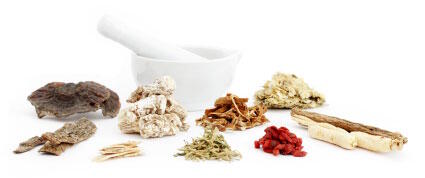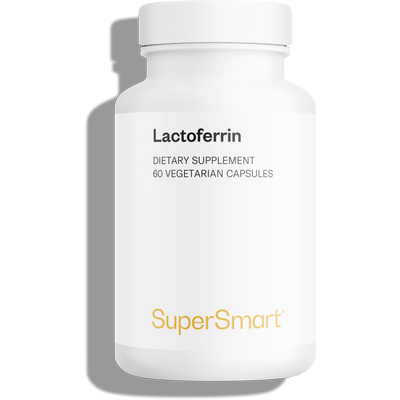25-10-2012
An alternative to the flu vaccine? Plant polysaccharides with powerful immune-stimulating properties
When you’re looking for protection against winter viruses, a flu jab is not the only option. Sometimes, it doesn’t even work, if other viruses or bacteria are involved. It goes without saying that a robust defence system is vitally important and certain nutrients and natural substances have been proven to be effective in this regard: probiotics, vitamins C and D, and zinc – crucial for normal development and function of cells mediating non-specific immunity (neutrophils, natural killer cells).
 However, in cases of chronic stress or persistent fatigue, or simply with increasing age, our vulnerability increases and we are less able to withstand the bacterial and viral attacks that start to occur once autumn is with us.
However, in cases of chronic stress or persistent fatigue, or simply with increasing age, our vulnerability increases and we are less able to withstand the bacterial and viral attacks that start to occur once autumn is with us.
One solution? Specific polysaccharides.
Polysaccharides are complex sugars, comprising glucose molecules joined together by glycosidic bonds. These specific polysaccharides are particularly beneficial at this time of year as they:
Where are they found?
Polysaccharides are commonly found in plants, the husk of cereal grains and certain yeasts, fungi, mushrooms and algae. Those that have been the studied most extensively and found to be effective include:
Astragalus root (Astragalus membranaceus) which is an adaptogen plant, used for hundreds of years in traditional Chinese medicine to maintain strength and protect against infection. Recent studies have concentrated on its immune-stimulating polysaccharides and certain other active ingredients beneficial in immune deficiency. This research showed that the polysaccharides stimulated the immune system via various pathways:
Goji berries (Lycium barbarum) also contain polysaccharides which provide powerful support to the body’s various defence systems, including the immune system, the kidneys and the liver. A number of studies have focused on the physiological effects of polysaccharides, clearly demonstrating health benefits, particularly their ability to stimulate the immune system by increasing activity of lymphocytes and natural killer cells (NK cells).
Last but not least, larchwood also contains polysaccharides called arabinogalactans which boost the immune system’s response to infection by acting on inflammation and stimulating cytotoxicity of the immune system’s natural killer cells.

One solution? Specific polysaccharides.
Polysaccharides are complex sugars, comprising glucose molecules joined together by glycosidic bonds. These specific polysaccharides are particularly beneficial at this time of year as they:
-
- Stimulate cell activity in the immune system and
- Increase numbers of immune cells
Where are they found?
Polysaccharides are commonly found in plants, the husk of cereal grains and certain yeasts, fungi, mushrooms and algae. Those that have been the studied most extensively and found to be effective include:
Astragalus root (Astragalus membranaceus) which is an adaptogen plant, used for hundreds of years in traditional Chinese medicine to maintain strength and protect against infection. Recent studies have concentrated on its immune-stimulating polysaccharides and certain other active ingredients beneficial in immune deficiency. This research showed that the polysaccharides stimulated the immune system via various pathways:
-
- By increasing numbers of stem cells in the spinal cord and lymphatic tissue and by encouraging them to develop into immune cells,
- By stimulating production of immunoglobulin and macrophages,
- By promoting activation of T lymphocytes and natural killer cells,
- By stimulating endogenous production of interferon and maximising its efficacy,
- And by inhibiting replication of certain viruses.
-
- fucoidan, a sulphated polysaccharide that boosts the immune system, and helps protect the body more effectively against different viruses.
- fucose, one of the eight essential sugars vital for optimal function of intercellular communication, is particularly abundant in macrophages – very important immune system cells that defend the body against infection.
Goji berries (Lycium barbarum) also contain polysaccharides which provide powerful support to the body’s various defence systems, including the immune system, the kidneys and the liver. A number of studies have focused on the physiological effects of polysaccharides, clearly demonstrating health benefits, particularly their ability to stimulate the immune system by increasing activity of lymphocytes and natural killer cells (NK cells).
Last but not least, larchwood also contains polysaccharides called arabinogalactans which boost the immune system’s response to infection by acting on inflammation and stimulating cytotoxicity of the immune system’s natural killer cells.
Order the nutrient mentioned in this article

One of the most active components of colostrum (the first form of breast milk)
www.supersmart.comFurther reading
24-06-2019
Better known as PEA, palmitoylethanolamide is a natural and powerful active principle discovered in 1957. Since then, it has consistently been the subject of new...
Read more04-09-2019
Did you know that of all your organs, it is the lungs which are the first to age? Like the skin, they are exposed to...
Read more03-01-2018
Every year, the same people seem to miraculously escape the epidemics of flu or gastroenteritis. The fact is though, luck has nothing to do with...
Read more© 1997-2026 Fondation pour le Libre Choix
All rights reserved
All rights reserved
Free
Thank you for visiting our site. Before you go
REGISTER WITHClub SuperSmart
And take advantage
of exclusive benefits:
of exclusive benefits:
- Free: our weekly science-based newsletter "Nutranews"
- Special offers for club members only

















